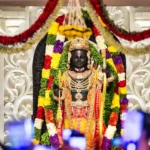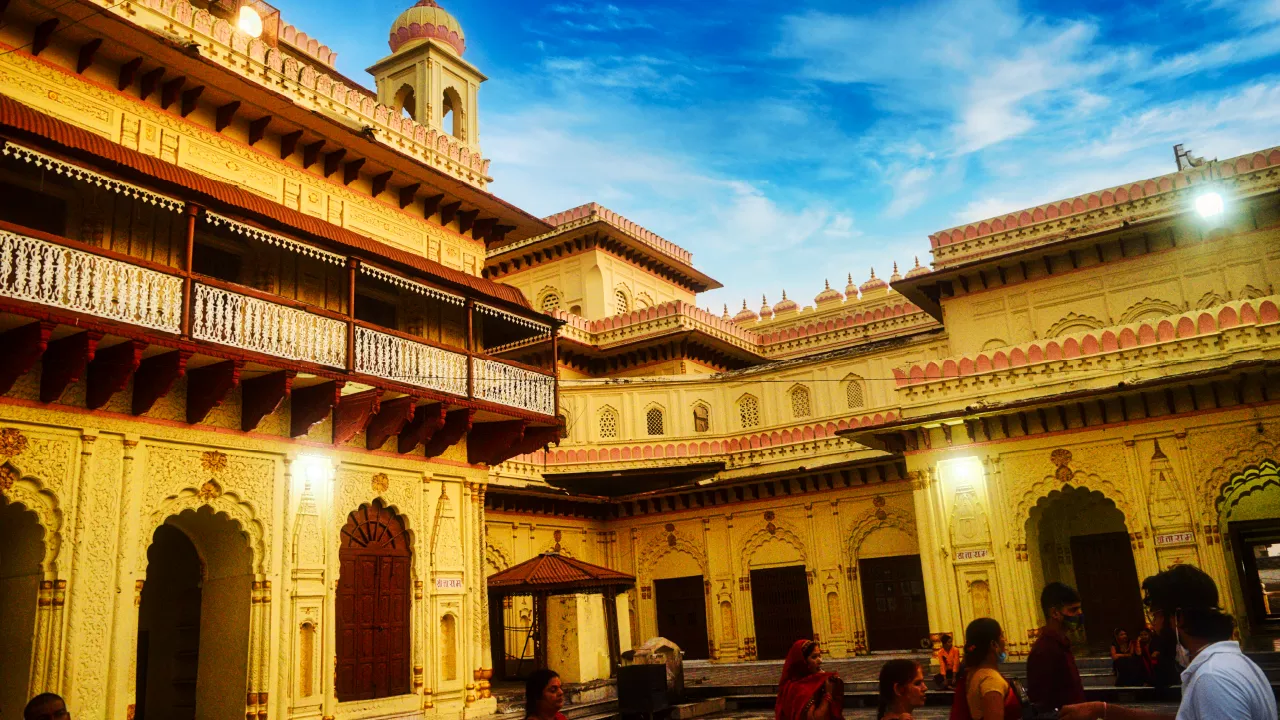The Ayodhya Ram Mandir: Unveiling Its Mythological and Historical Significance
The Ayodhya Ram Mandir, a symbol deeply rooted in the mythological and historical narratives of India, stands as a testament to the enduring legacy of Lord Ram. This temple, more than just an architectural wonder, is a living embodiment of the epic story of the Ramayana, which has shaped the cultural and spiritual consciousness of countless generations.
At the core of the Ayodhya Ram Mandir’s significance is the tale of Lord Ram, whose life and virtues are celebrated in the Ramayana. This ancient epic, revered in Hindu tradition, narrates Lord Rama’s journey, marked by trials, tribulations, and triumphs.
The temple is built on the sacred ground believed to be the birthplace of Lord Ram, making it a site of immense spiritual importance for Hindus worldwide. It’s a place where myth and history converge, offering a tangible connection to the divine saga that has been a cornerstone of the Hindu faith.
The story of the Ayodhya Ram Mandir also encompasses the historical evolution of Ayodhya itself. Over centuries, this site has witnessed numerous developments, reflecting the changing dynamics of faith, politics, and culture in India. The recent construction of the temple marks a significant chapter in this ongoing narrative, symbolizing a resurgence of cultural pride and spiritual rejuvenation.

Moreover, the Ayodhya Ram Mandir is not just a place of worship but also a beacon of unity and harmony. It draws people from diverse backgrounds, bridging gaps and fostering a sense of collective devotion. The temple serves as a powerful reminder of the shared heritage and values that bind the Hindu community together, transcending geographical and societal boundaries.
The Ayodhya Ram Mandir’s story is, therefore, a blend of mythology, history, and contemporary relevance. It captures the essence of Lord Ram’s teachings and the enduring appeal of the Ramayana in the modern world. As the temple stands today, it continues to inspire and unite people, echoing the timeless lessons of duty, righteousness, and compassion that Lord Ram epitomized.
Cultural and Religious Influence of the Ayodhya Ram Mandir
The Ayodhya Ram Mandir, beyond its architectural magnificence, plays a pivotal role in the cultural and religious landscape of India. This temple, dedicated to Lord Ram, is not only a place of worship but also a symbol of India’s profound and diverse cultural heritage.
Situated in the historic city of Ayodhya, the Ram Mandir serves as a cultural focal point, drawing people from various walks of life. Its significance transcends religious boundaries, becoming a centre for cultural convergence. The temple is a site where traditions are celebrated, and cultural narratives are preserved.
The intricate carvings and artistic adornments within the temple complex are illustrative of India’s rich artistic legacy. These carvings, which depict scenes from the Ramayana, demonstrate the exceptional skill of artisans and their commitment to preserving the narrative and spiritual essence of the epic.
Moreover, the Ayodhya Ram Mandir acts as a unifying force, bringing together individuals from different communities and backgrounds. In a country marked by its diversity, the temple stands as a testament to the power of faith and devotion in bridging societal divides. The shared reverence for Lord Ram and the values he represents fosters a sense of unity and collective identity among the temple’s visitors.

The temple’s influence extends to its role in showcasing India’s rich cultural heritage. As a symbol of ancient Indian architecture and storytelling, the Ayodhya Ram Mandir offers a glimpse into the country’s past, presenting a narrative that is deeply entwined with its present and future. It encapsulates the essence of Indian culture, reflecting the country’s spiritual depth and artistic ingenuity.
Furthermore, the Ayodhya Ram Mandir’s construction and its encompassing narrative have revitalized interest in India’s religious and cultural traditions. It has sparked conversations about the role of such monuments in modern society, highlighting their relevance in a rapidly changing world. The temple not only serves as a place of worship but also as a reminder of the enduring power of faith and the importance of preserving cultural and religious heritage.
In essence, the Ayodhya Ram Mandir is much more than a religious edifice; it is a cultural beacon that illuminates India’s rich history and spiritual traditions, fostering a sense of communal harmony and cultural pride. Its impact on the cultural fabric of India is profound, resonating with people across the nation and around the world.
Architectural Brilliance of the Ayodhya Ram Mandir
The Ayodhya Ram Mandir, a marvel of ancient Indian architecture, stands as a shining example of the country’s rich architectural heritage. This temple, with its grand design and intricate details, embodies the architectural prowess and cultural depth of India.
At the heart of the Ayodhya Ram Mandir’s architectural significance is its adherence to the Nagara style, a classical style of Indian temple architecture. Characterized by its tall spires or shikhara, the temple’s design is a testament to the sophistication of ancient Indian architects. These spires are not just aesthetic elements; they symbolize a connection between the earth and the heavens, an architectural embodiment of spiritual aspirations.
The temple’s exterior and interior are adorned with intricate carvings, each telling a story from the Ramayana. This narrative element of the temple’s design makes it a living repository of mythological tales and cultural lore. The detailed sculptures and bas-reliefs on the temple walls provide a captivating and immersive experience, both for devotees and visitors, allowing them to visually partake in Lord Ram’s epic journey.
Furthermore, the sanctum sanctorum (garbhagriha) of the Ayodhya Ram Mandir is a focal point of worship, housing the idols of Lord Ram, Sita, Lakshman, and Hanuman. These idols are not just religious symbols but are also integral to the temple’s architectural narrative, representing the core of Hindu worship and devotion.

The construction of the Ayodhya Ram Mandir has also been an exercise in blending traditional architectural techniques with contemporary engineering. The design’s grandeur is captured in its magnificent spires, symbolic elements, and the overall scale of the structure. It stands as a tribute to India’s architectural history, showcasing the continuity of traditional design principles in modern constructions.
In addition to its religious significance, the Ayodhya Ram Mandir serves as an educational resource for those interested in ancient Indian architecture. It offers insight into the techniques, materials, and artistic vision that have shaped Indian temple architecture over centuries. The temple is not only a place of worship but also a monument that educates and inspires, showcasing the artistic and architectural ingenuity of India.
In conclusion, the architectural brilliance of the Ayodhya Ram Mandir goes beyond its physical structure. It represents a confluence of spirituality, art, and history, symbolizing the enduring legacy of India’s architectural heritage. The temple stands as a proud testament to the skill and devotion of the artisans and architects who have brought this majestic structure to life.
Economic and Tourism Revival Through the Ayodhya Ram Mandir
The Ayodhya Ram Mandir has emerged as a catalyst for economic growth and a significant draw for tourism in Ayodhya. This temple, more than a religious landmark, is reshaping the economic and cultural landscape of the region.
Since the commencement of the Ayodhya Ram Mandir’s construction, Ayodhya has seen a surge in tourism. The temple, with its profound religious and historical significance, attracts pilgrims, history enthusiasts, and tourists from across the globe.
This influx of visitors has invigorated the local economy, leading to the growth of hotels, guesthouses, eateries, and various other businesses catering to the needs of the tourists. The increased footfall in Ayodhya is not just a testament to the temple’s spiritual appeal but also indicates its role as an economic driver for the region.
The government, recognizing the potential of the Ayodhya Ram Mandir as a major tourist attraction, has initiated several infrastructure development projects in Ayodhya. These projects aim to enhance the city’s accessibility and provide better facilities to visitors, further promoting Ayodhya as a key destination on India’s cultural and spiritual tourism map.
The development of such infrastructure not only supports tourism but also creates numerous job opportunities, contributing to the overall socio-economic upliftment of the area.

Moreover, the Ayodhya Ram Mandir’s impact on tourism extends beyond immediate economic benefits. It has played a crucial role in rebranding Ayodhya as a vibrant cultural hub.
The temple’s presence has encouraged the preservation and promotion of local arts, crafts, and cultural practices, providing a platform for artisans and performers to showcase their talents. This cultural revival, driven by the temple, enhances the tourism experience, offering visitors a deeper understanding of the region’s rich heritage.
The Ayodhya Ram Mandir, therefore, stands as a significant factor in the economic and cultural renaissance of Ayodhya. It has transformed the city into a destination that appeals to a wide range of visitors, from spiritual seekers to cultural enthusiasts. The temple’s role in boosting tourism and catalyzing economic growth highlights the multifaceted impact of religious monuments on society and the economy.
In essence, the Ayodhya Ram Mandir is not just a center for spiritual enlightenment but also a beacon of economic and cultural revival, driving Ayodhya’s transformation into a prominent and prosperous tourist destination.































